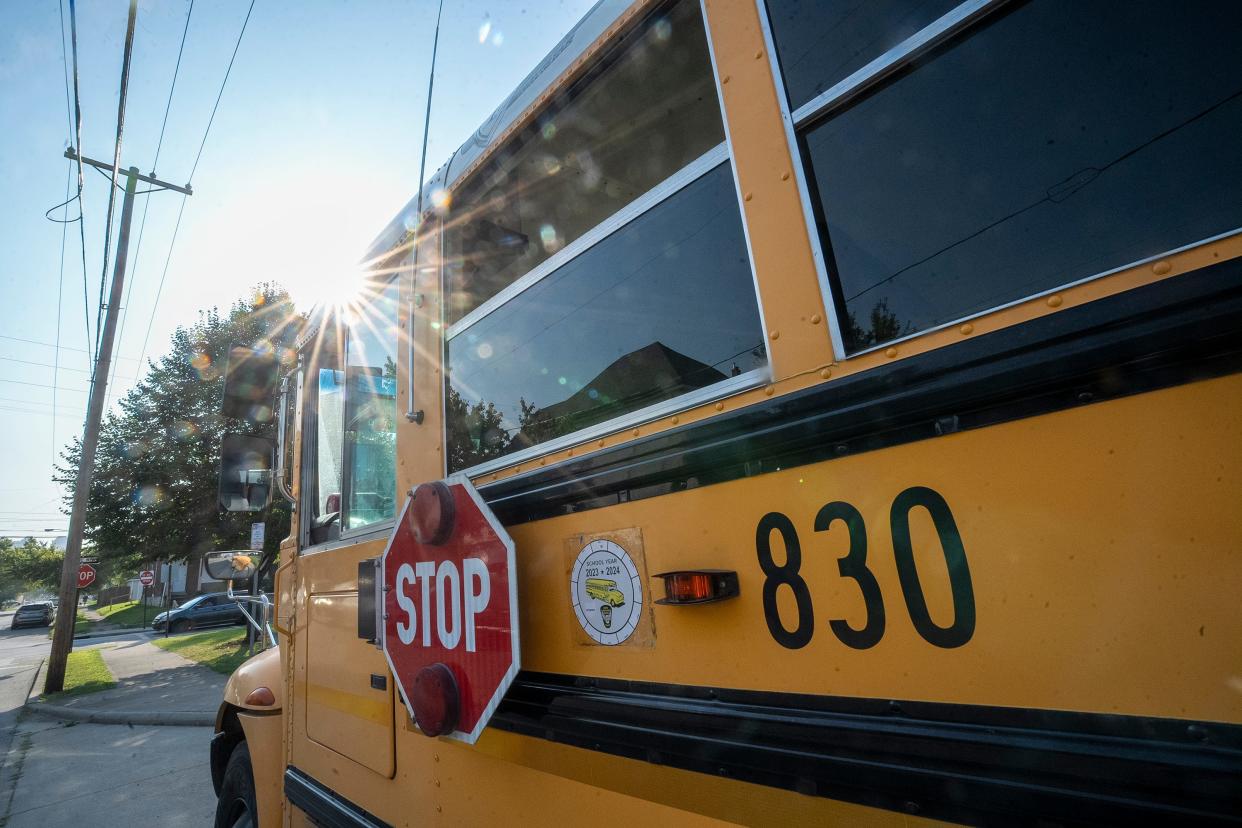Columbus City Schools provides spending plan for $100 million annual levy request

With voting on a $100 million annual levy for Columbus City Schools starting in less than a month, district administration laid out what the levy would fund — and what would be cut if the levy fails.
Difficult conversations, like staff reductions and building consolidation, will need to happen, Superintendent Angela Chapman said at the Tuesday board meeting at Centennial High School on the Northwest Side,
"We must lock hands and traverse this together if we want to meet and exceed the needs of our students and the desires of our community," Chapman said.
If approved by voters, the levy placed on the November ballot by the Columbus City Schools Board of Education would cost $269.50 per $100,000 of current appraised property value, and would first be assessed in 2024. The actual millage rate paid by individual taxpayers will vary under the 2023 Franklin County auditor reappraisal. Early voting for the fall election begins Oct. 11.
Of the 7.7-mill levy, 3 mills, or $38,612,000 per year of the revenue, would go toward operating expenses. The other 4.7 mills, or $60,492,000 per year in revenue, would be used for maintenance of the district's more than 100 school buildings.
As Columbus City Schools ask the community to back the levy, the district is also bracing for the end of federal pandemic relief funding, which expires in September 2024. In total, the district received more than $455 million in federal Elementary and Secondary School Emergency Relief (ESSER) funds from different pandemic relief programs, distributed in three allotments beginning in 2020 and ending in 2021.
The Dispatch looks at the facts: The $100 million annual Columbus City Schools levy
To that end, Chapman said, the district is planning a $22-million reduction in non-payroll expenses to balance its five-year forecast.
The district also currently has 647 positions filled by pandemic-relief money, totaling nearly $65 million in payroll and dozens of contracted services provided.
"We certainly have to plan for both scenarios," Chapman said of the levy at a Wednesday press conference. "From the administration's standpoint, you know, we will have to think creatively about how we realign our existing resources to fill in the gaps and to provide the supports. Because the needs of our students will not go away."
Chapman: If the levy passes
If the levy passes, the district said it would spend:
$27.5 million to preserve jobs currently funded through ESSER
$1.2 million to expand pre-kindergarten programs
$19 million to preserve existing family and student support services
$2.5 million to add professional development opportunities for math and high-need licensure incentives for teachers to get in-demand qualifications.
$26.8 million for infrastructure improvements like roofing, HVAC, plumbing and electrical work.
$6.75 million for athletic site improvements
$23.4 million for renovating learning spaces like classrooms, auditoriums and cafeterias.
While the amount of positions that the district will aim to retain is around 300, she said the positions funded by one-time payments are now vital to the educational mission of the district.
"All of these positions play a critical role in supporting the students and the staff in our buildings, and in our classrooms each and every day," she said Wednesday.
Chapman: If the levy fails — hundreds of positions could be cut
Chapman said that if the levy fails, there would be staff reductions in all the ESSER-funded positions. She noted Wednesday that these are positions, not people that will be reduced and some people currently in ESSER-funded positions would be able to transfer into vacancies opened by attrition.
Additionally, only enough building substitutes would be maintained to fill long-term teacher vacancies. Other programs would be significantly diminished, including support services, career advising and elementary school summer programming.
Buildings would also switch to a "run-to-fail" model, which means they would not be maintained or repaired until they break.
"If we don't have the resources to replace them when they expire, then we're essentially running these systems well past their expiration date," Chapman said of what a run-to-fail model might entail.
She also added the district would be looking at accelerating consideration of what of the district's more than 110 school buildings might need to be consolidated.
"Those conversations have not begun yet, but those are conversations that we will certainly have to prioritize sooner than later if we are not able to increase our funding and revenue," Chapman said.
@Colebehr_report
Cbehrens@dispatch.com
This article originally appeared on The Columbus Dispatch: Columbus City Schools spells out plan for $100 million levy ask

